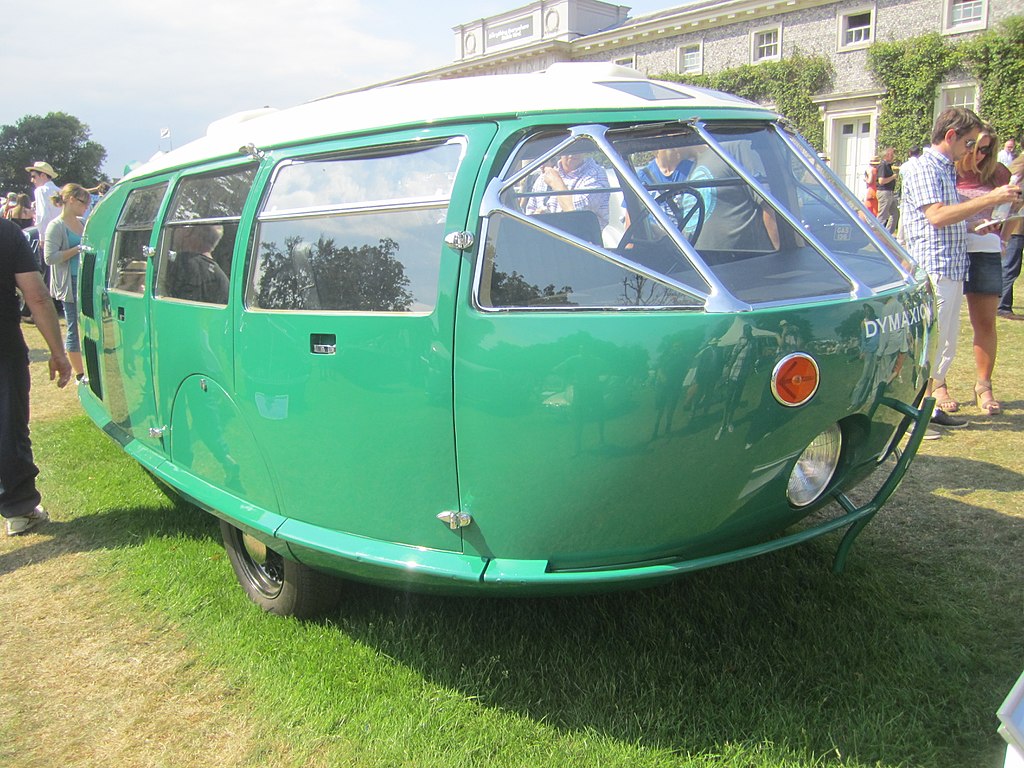
With a name that rings of bully characters in ‘80s coming of age movies, Buckminster Fuller was quite the opposite. The Massachusetts raised philosopher, engineer and architect lived his life as, well, as he put it, “an experiment to find what a single individual can contribute to changing the world and benefiting all humanity.” His way of living resulted in a number of inventions, among them the Dymaxion car, a name that combines dynamic, maximum, and tension. The first prototype of the unique vehicle rolled out of a Bridgeport, Connecticut, factory on this day in 1933. It just so happened to be Fuller’s birthday, who was born on 1895.

Top: The Dymaxion. By Starysatyr – Own work, CC BY-SA 3.0
The car came three years after the completion of his Dymaxion house. Fuller’s house (see what I did there?) was a pre-manufactured, assembled on site home designed around energy efficiency and ease of shipment and assembly. His house was an experiment in doing more with less, as was the car by the same name. In total, three prototypes of what he described to his young daughter as a zoomobile, a vehicle he envisioned that would one day hop off the road at will and fly about like a bird. The prototypes were essentially the ground-taxiing phase of a vehicle that may one day be redesigned to fly.
Each featured a rear mounted V8 and front wheel drive system with a single wheel in the rear that controlled steering and could turn 90°. The design resulted in unflattering handling, and Fuller knew it. Without massive improvements to the design, the car would never be available to the public, Fuller stated. When a Dymaxion driver was killed in an accident with another vehicle in 1933, it was found the design of the car was not related to the cause of death.
That car was later repaired and sold to the director of the automotive division of the US Bureau of Standards, only to be destroyed in a garage fire in Washington D.C. The second prototype is the only survivor of the original trio. Today it resides in the Harrah Collection of the National Automobile Museum in Las Vegas. After changing hands many times and covering more than 300,000 miles, the third prototype is presumed to have been scrapped in the 1950s. Fortunately there have been two rather faithful replicas produced.
Though the Dymaxion received interest from numerous automakers, including Henry Ford and Walter Chrysler, Fuller never intended the car to be a commercial venture. Fuller had, somewhat reluctantly, accepted money from a stock trader named Phil Pearson to build the car. His concern about the benefactor’s profit motives and short-sightedness led him to add the now famous “ice cream soda clause” to their contract. It stated Fuller could freely buy only ice cream sodas with all the donated money, if that’s what he chose to do.

Following the completion of the first prototype, Fuller used his inheritance to finish the second two. After selling all three he dissolved the Dymaxion Corporation. Fuller later receive patents for the geodesic dome and octet truss, among many others, before passing away on July 1, 1983 at the age of 87.






















